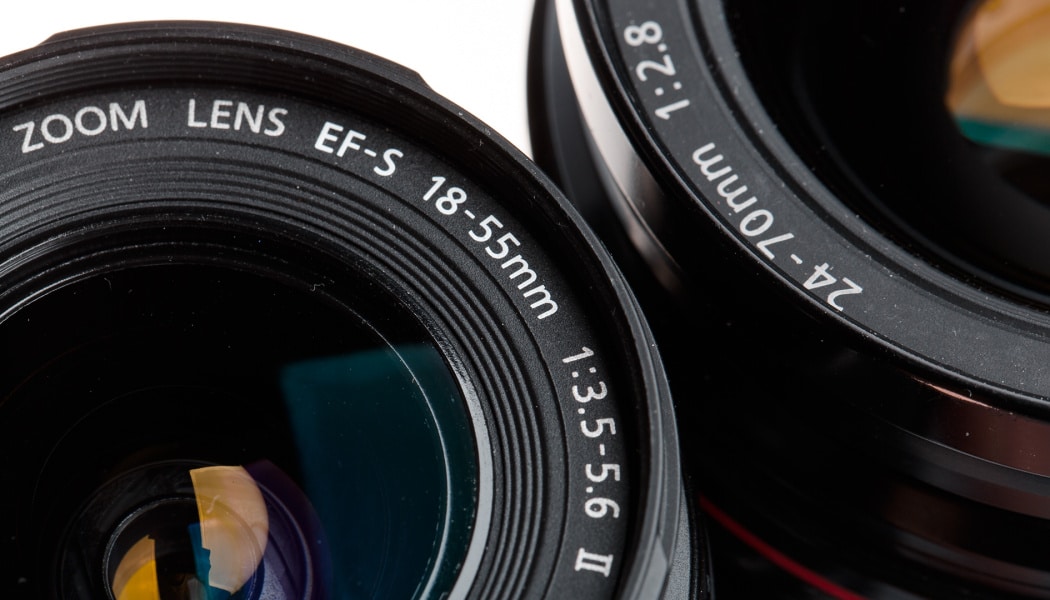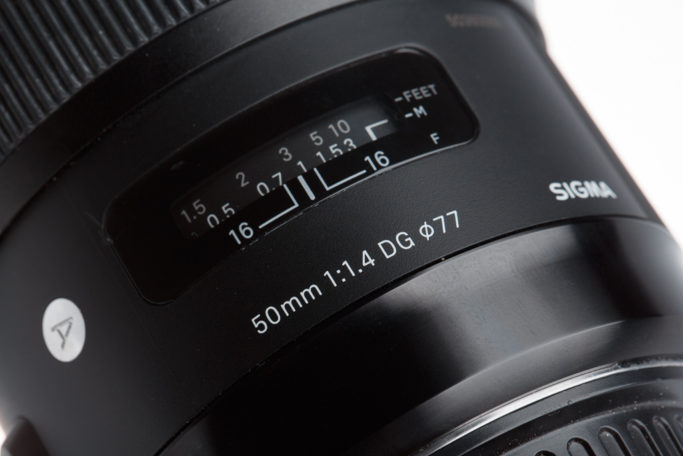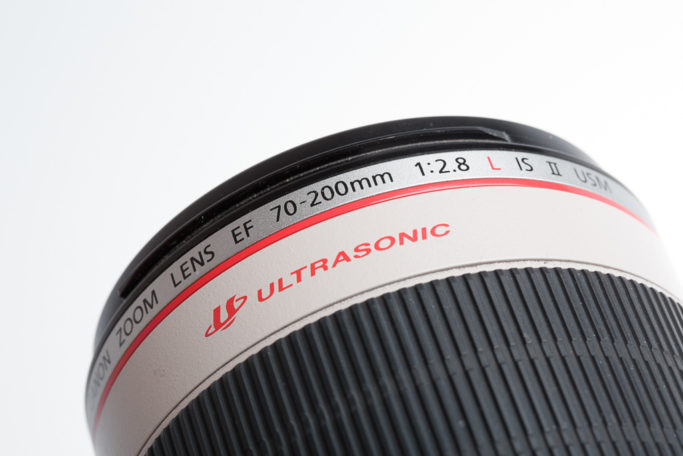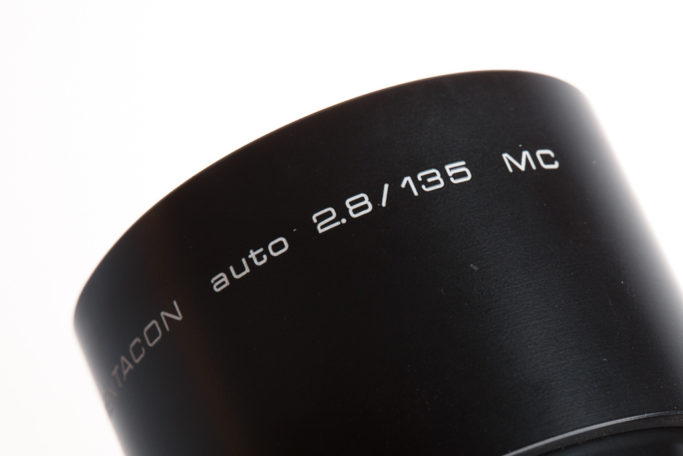What Do Those Numbers and Letters on Lenses Mean?

Lens names are full of abbreviations, number ranges, and useless advertising. Take a look at which pieces of information are important for you and what it all means.
It’s absolutely essential that get a grip on manufacturers’ lens designations. For one thing, this lets you determine how good your lens is, and for another, it lets you quickly search among the dozens of items in shop catalogs when you’re buying a new lens. And it teaches you that some of them can be very treacherous—one good example is “Tamron SP AF 17-50mm f/2.8 XR Di-II VC LD Aspherical (IF) for Canon.”
The Numbers are the Foundation
No matter how the lens is designated, somewhere in the middle of it you’ll find a series of numbers, typically in one of the following formats:
- A-B mm f/C-D (e.g. 18-55mm f/3.5-5.6)
- A-B mm f/C (e.g. 18-50 mm f/2.8)
- A mm f/C (e.g. 50 mm f/1.4)
Other methods for expressing this information also exist. Very often you’ll see a shortened notation with no units, of the sort “50/1.4.” In exceptional cases, generally on older lenses, you can also find the numbers reversed: “1.4/50.” Everything can also be expressed as “50 mm 1:1.4” or “50 mm F1.4.” But in all cases this is nothing more than a way of writing the numbers; their meaning is always the same.
Different Formats, Identical Meaning
50 mm f/1.4 // 50/1.4 // 1.4/50 // 50 mm 1:1.4 // 50 mm F1.4
The first number gives the range of focal lengths in millimeters, while the second gives the lens speed (for the 1.4/50 designation it’s vice-versa).
Focal Length Range
The first number or pair of numbers indicates the range of available focal lengths in millimeters. From this you can tell what angles of view the particular lens can handle. Lower numbers mean a wider angle. So an ordinary, basic 18-55 DSLR lens can “zoom” from medium-wide views out to the beginning of telephoto range. Often they are supplemented in people’s gear by a 70–300 lens, which on the other hand is a pure telephoto.
Things are complicated a bit by the fact that angle of view depends both on focal length and sensor size. So if you want to compare lenses made for cameras with different sensors, you need to know the crop factor, i.e. how many times smaller (or for some rare cases, larger) the given sensor is than a reference sensor size called full-frame (the size of a film frame; its crop factor = 1). The crop factor is multiplied by a specific focal length to get an equivalent for the full-frame world. The cheaper DSLRs have a sensor about 1.5 times smaller, so you use a crop factor of 1.5 for multiplication, and thus their focal lengths of 18–55 mm correspond to 27–83 for full-frame cameras.
If there is only one number instead of a range of focal lengths listed before the slash (e.g. “50/1.4”), then this is a lens that has no zoom ability and shoots with just one focal length. Although these fixed lenses are less universal, they tend to have higher image quality, making them a favorite among advanced photographers.
Lens Speed
The lens speed is listed after the small “f” and the slash. Also called the minimum f-number, it specifies how much light the lens lets through (for highly advanced readers: ignore the minor difference between the f-stop and the t-stop).
Smaller numbers are better—the smaller the number, the more light goes through the lens and the more easily it can take pictures even in deeper darkness. Moreover, it has a smaller depth of field, i.e. when focusing on an object, the background will be blurred more quickly (that is, at smaller differences of distance) than on a lens with a numerically higher (worse) minimum f-number. Unfortunately lenses with better lens speed are larger and heavier, and thus also more expensive.
If there is a range of numbers after the slash, like there is for example in “18-55mm f/3.5-5.6,” that means that the lens has a lens speed of f/3.5 at the 18mm focal length, but a lens speed of f/5.6 at the 55mm focal length. Its lens speed smoothly changes between these two extremes. A lens of the type “18-50 mm f/2.8,” on the other hand, has a nice lens speed of f/2.8 throughout its whole range of focal lengths, and so it’s higher-quality (but also larger, heavier, and more expensive…).
If you’re comparing lenses among different systems, you have to also multiply each lens speed by the crop factor.
Compatibility with Your Camera
Another thing that’s important for a lens is whether or not it’s suitable for your camera—and I’m not just talking here about the right bayonet, which makes it possible to attach the lens to the camera at all.
Many camera manufacturers produce different model lines with two or three different sensor sizes, with the highest lines being full-frame and the others somewhat smaller. But despite the different sensor sizes, these different camera lines from one manufacturer will share the same bayonet. That means that you can (sometimes) attach a lens that was originally intended for another sensor size. You can do that on purpose, but also accidentally—and so it’s important to pay attention to the different designations when making your purchase.
Additionally, so that people with smaller sensors don’t have to unnecessarily carry large and heavy lenses, some lenses are specially manufactured so as to only cover a smaller sensor with the image they produce. Although lenses like these are thus smaller, they are not usable (or only usable to a limited degree) on full-frame cameras.
Fortunately within individual bayonets and for different manufacturers you can find indications of whether or not a given lens is made for large sensors or the smaller ones. If you own a full-frame camera, this lets you avoid incompatible lenses, and if, meanwhile, you own a camera with a smaller sensor, you don’t have to buy unnecessarily expensive lenses. But I have to stress that cameras with smaller sensors can still use the “larger” lenses without problems. What often happens, however, is that there is no smaller variant available with the same parameters—then you really do have no other choice than to invest more money and carry a little more lens weight than is really necessary.
Designations differ from manufacturer to manufacturer. The manufacturers with the most widespread lenses use these abbreviations. The first is the designation for full-frame lenses (crop factor 1); the rest are for smaller lenses.
- Canon: EF vs. EF-S (crop 1.6) vs. EF-M (crop 1.6, special line for mirrorless cameras)
- Nikon: FX vs. DX (crop 1.5) vs. 1 Nikkor (crop 2.7, once again for mirrorless only)
- Sony A-mount: unmarked vs. DT (crop 1.5)
- Sony E-mount: FE vs. E (crop 1.5)
- Pentax: FA vs. DA (crop 1.5)
- Sigma: DG vs. DC (crop 1.5/1.6) vs. DN (crop 2)
- Tamron: Di vs. Di II (crop 1.5/1.6) vs. Di III (crop 2, but sometimes also 1.5)
- Tokina: FX vs. DX (crop 1.5)
Some manufacturers—these last three especially—produce lenses for various systems from other brands, so here you also have pay attention to the bayonet. You can generally find this in store listings within the lens name in a form like “Sigma 50/1.4 for Canon.”
Stabilization
Stabilization is an important parameter that states whether or not a lens includes an image stabilization system. This system lets you shoot tripod-free even with long exposure times, which is especially useful for telephoto lenses. Certain cameras have stabilization built directly into the camera body, and so the lens doesn’t have to handle it. For the rest, you have to watch the lens designation, and, in light of the fact that here again every manufacturer uses different terminology, you have to look for one of their abbreviations:
- IS as in Image Stabilization (Canon)
- VR as in Vibration Reduction (Nikon)
- OSS as in Optical SteadyShot (Sony)
- OS as in Optical Stabilization (Sigma)
- VC as in Vibration Compensation (Tamron)
- VCM as in Vibration Correction Module (Tokina)
Because adding a stabilization module makes a lens more expensive, sometimes you’ll find two variants for one lens: one variant with stabilization, and one without. Then you have to decide whether or not stabilization is worth it despite the increased lens cost.
Filter Diameter
One very practical piece of information is the one concerning the flange at the end of the lens, used for screwing filters onto it. These exist in a variety of different diameters, and for this reason sometimes you’ll find a marking on your lens such as “Ø 77 mm.” On professional lenses, 77 or 82 mm are common. Lenses for smaller cameras typically use smaller filters.

Lens Version
Manufacturers gradually update the most commonly used lenses, and so for example once every five or ten years you can encounter a lens that has the same parameters as its predecessor, but looks different and is, in general, higher-quality. It differs from its predecessor via a “II” at the end (some lines have even reached up to “III.”)
You generally can’t find the older version in stores, and so there’s no way to make a mistake on that front, but you have to watch out in second-hand stores and in reviews, where you can run into models from various periods.
Other Abbreviations & Marketing Abbreviations
Other abbreviations are used on lenses too, but these often appear for mere marketing reasons. That’s not to say that the given lens is mislabeled, but the given abbreviations go into depth unnecessarily, and some manufacturers skip them because of this. So another lens can be just as good or better, but its creator didn’t find it appropriate to put such detailed information in its name.
Even still, it’s good to have a general idea of what’s in question, so let’s take a look at the main terms here.
Focusing Motor Type
In high-quality lenses, the cheapest simple focusing motor is replaced with a supersonic motor, which is faster and quieter. This is indicated as USM (Canon), SWM (Nikon), SSM (Sony), HSM (Sigma), PZD (Tamron), or with the suffix “-S” (Tokina).
This designation can sometimes be misleading, as it is e.g. for Canon, where “USM” sometimes indicates the lower-quality MicroUSM motor, and therefore I consider this designation to be more marketing-oriented as well, and I recommend that you rely mainly on reviews of the lens’s real behavior.

Macro Possibilities
Today the word MACRO in all caps in a name has also become a source of confusion. Although true macro lenses include it in their names, manufacturers of other lenses of all types also include it in their names at their leisure.
So it’s better to peer into the specifics of such a lens—the maximum available zoom level. True macro lenses have 1:1 or better (2:1, 3:1, etc.), which means that a photo’s subject is projected onto the sensor at life size or larger-than-life size.
But you can also run into lenses such as the one that’s called the Tamron 28-75/2.8 MACRO despite having an underwhelming maximum zoom level—just 1: 3.9. The Nikon 24-70/2.8 lens has the same zoom level, but its manufacturer was reasonable and didn’t cram “MACRO” into its name.
Special Materials
Speaking of Tamron, they—along with Pentax—like to boast of the special materials or individual lenses inside of a camera lens. These are abbreviations such as XR (Extra Refractive), ED (Extra Dispersion), and LD (Low Dispersion), and in some cases descriptions of the lens shape: “Aspherical.” These lenses can easily be worse than other lenses that have a far smaller number of abbreviations. Here again, only real-world tests can decide.
But there’s one exception: Some lenses are currently produced in two versions, almost identical according to specifications, differing only in, indeed, whether or not a special optical element is used inside. One good example is “Canon 70-300/4-5.6” vs. “Canon 75-300/4.5-5.6 DO.” In this case it’s about the “Diffractive Optics element” inside, which is significantly lighter than an ordinary lens, but suffers the trade-off of slightly different optical qualities (especially potentially inferior bokeh). The “DO” designation is the safest way to tell these lenses apart, which is very important.

Internal Focusing
Another Tamron “specialty”—the IF (Internal Focusing) designation. It tells you that the lens doesn’t change in size during focusing, making it easier to work with. However, other companies have plenty of lenses like this. So Tamron is not at all special in having this function—just in using it in the lens name for marketing purposes.
Higher-quality Lines
Manufacturers also try to differentiate the lenses that are in their opinion better than the rest of their production. So you can justify to yourself the higher cost you pay by basking in the glow of the special designations for these lens lines—L (Canon), G (Sony), A/Art/EX (Sigma), SP (Tamron), or PRO (Tokina). (Nikon doesn’t have such a designation.)
Watch Out for the Special Details
That’s all for the subject of lens designations. I’ve described how the symbols work for the main manufacturers. To give you a better overview, here’s a summary chart:

There are still few minor details with an impact worth caring about, but these are only found on a couple of quite unusual lens types. The Nikon “AF Nikkor 14mm f/2.8” can serve as an example here. Nearly all Nikon lenses have the designation AF-S at the beginning, which indicates that the lens is able to focus automatically using its own motor. But this particular lens has just AF instead of AF-S, which means that although it can focus automatically, it can only do so with the help of a motor inside the camera body.
So if for example you own the Nikon D3300 DSLR, which doesn’t have a motor, then all that’s left for you here is manual focusing.
So: if a lens’s designation differs in some way from the usual standard, it’s a good idea to investigate so that you don’t make a bad purchase at the store.
Here’s wishing you successful deciphering!
